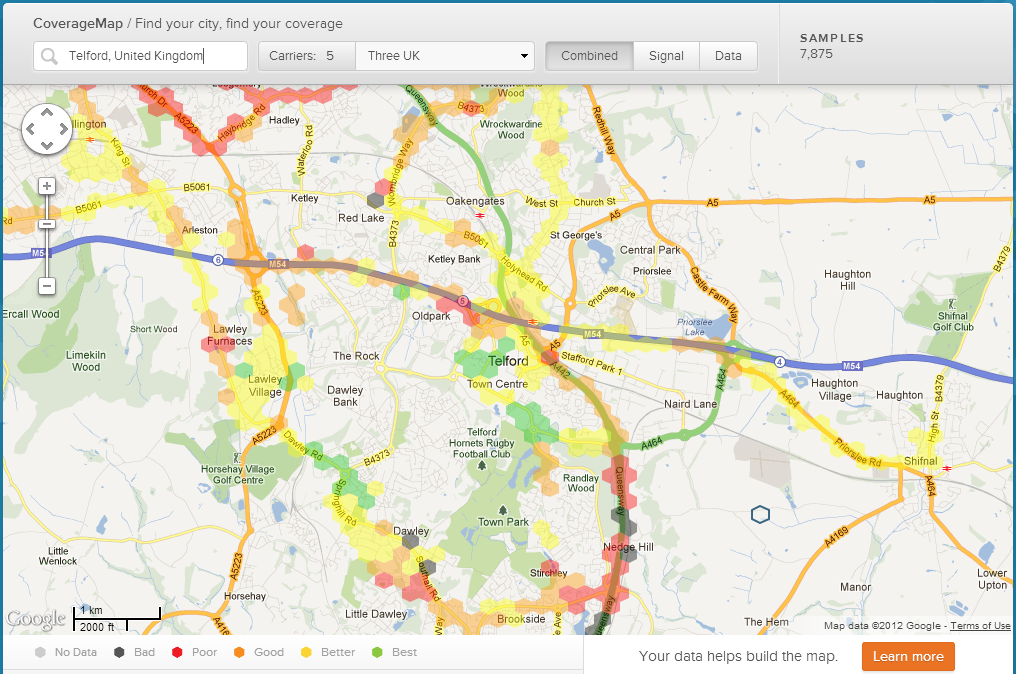A colleague showed me an app the other day that helps produce crowd sourced mobile phone coverage and performance maps.
I’m sure everyone’s seen the mobile phone operators’ own coverage maps which are reasonably accurate but are based on maths rather than user experience and Rootmetrics have seen this as a gap that needs filling.
I have no idea how Rootmetrics make money but that’s their problem, not mine. The company has already mapped much of America and is now mapping the UK. Their employees have already driven round London and Hull testing the mobile networks and the gaps are being filled by mobile phone users like me who are running the continuous test on the Rootmetric app when travelling to build up coverage and performance data. The continuous test only works on the Android version of the app, not the iPhone version for some reason (probably a spurious “security” restriction imposed by Apple) and it’s pretty data hungry – the app has used over 750mb in 4 days – so you’ll only want to use it on an unlimited data plan.

The tests produced are a good guide for signal strength at least but the data stats are slightly less convincing which makes the Rootmetric score – a combined score based on signal strength and data speeds – a bit misleading. For instance, if I check my connection speed on the speedtest.net app I can get some blistering speeds for a 3G connection – 9.39mbit/sec one day this week – but the download speed is fairly average using Rootmetrics’ servers giving it a yellow/orange hexagon – which is more a refelection on Rootmetrics’ infrastructure than Three’s. I tether my tablet to my phone at work and at least one of my colleagues tethers to it in the office because he’s on Vodafone and they’re rubbish and it’s good enough to watch live TV on more than one device using the same connection.
That said, the idea of crowd sourcing mobile phone coverage data is a great one and I’m certainly doing my bit!

















